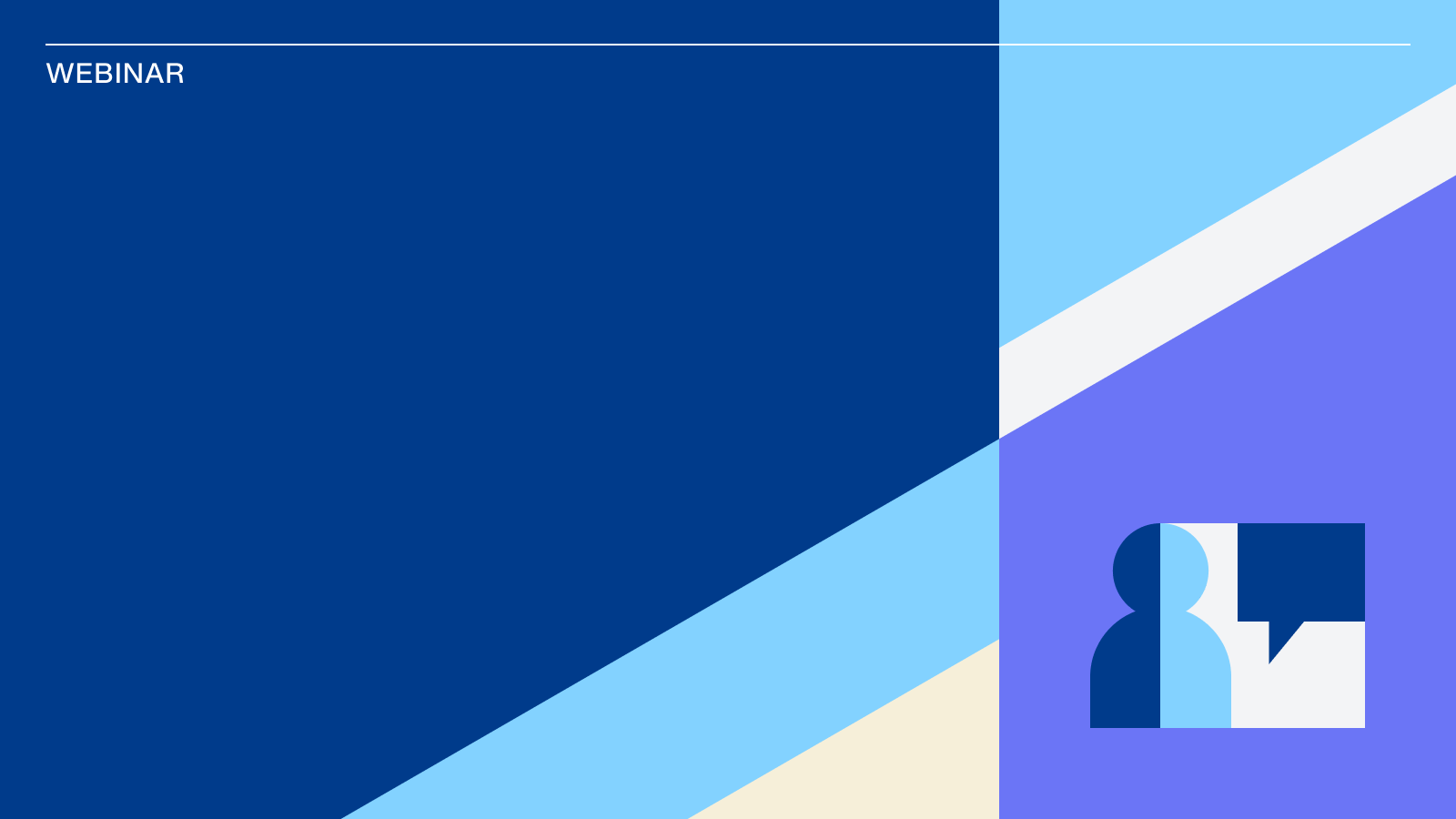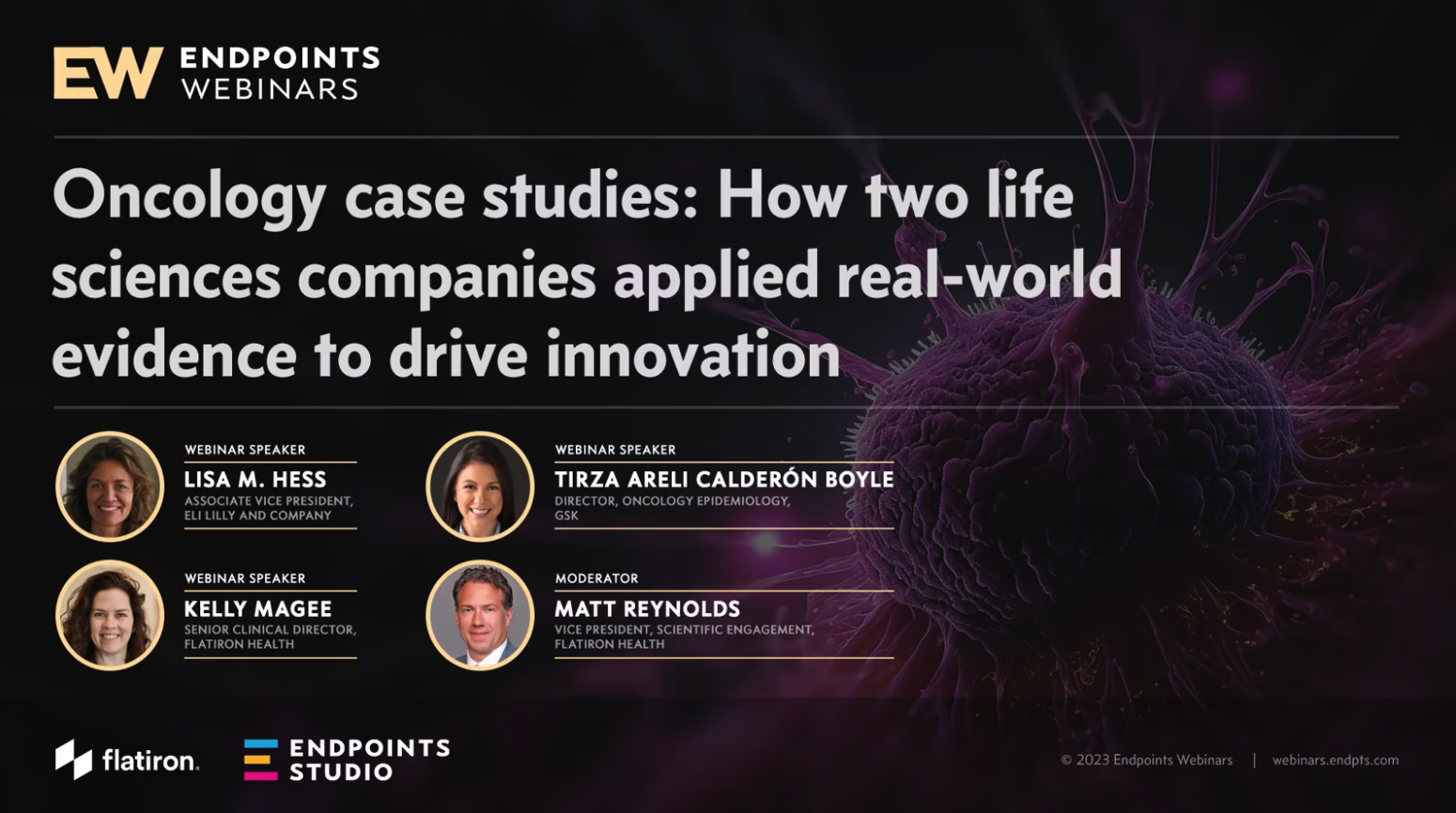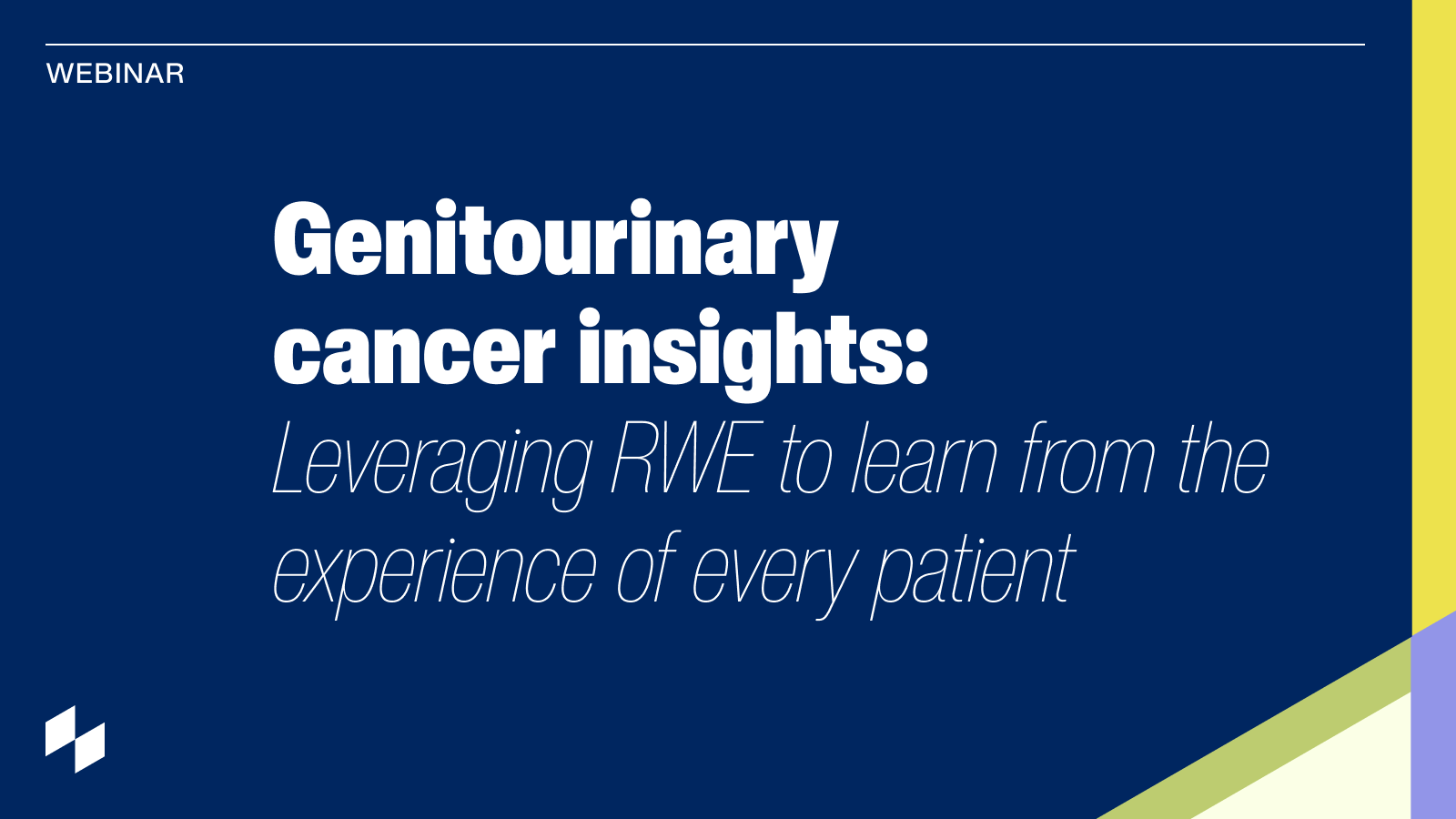This talk is part of the ResearchX session: Precision Oncology: How RWD is Advancing Clinico-Genomic Research.
Sections include:
- Impacting Complex Genomic/Immune Landscapes: Precision Medicine in the Real-World Cancer Clinic
- Use of a Clinico-Genomic Database (CGDB) for R&D
- STK11 and KEAP1 mutations as prognostic biomarkers in an observational real-world lung adenocarcinoma cohort

Transcript
Michael Taylor: So really appreciate the opportunity to spend a few minutes to share a bit about how we're using the Flatiron/FMI clinico-genomic database at Roche/Genentech to support research and development.
Initially, I'll share some thoughts on some high level opportunities, and follow up with a quick overview of one project that we did using the clinico-genomic database at Roche. And then finally close with a bit of a view toward the future. Ultimately, I see many opportunities to leverage the clinico-genomic database to support research and development. As we progress further along the journey to achieve personalized health care for patients.
Well, it might be seen basic, there are a number of incredibly impactful opportunities to use innovative data sources, such as the clinico-genomic database, to address fundamental questions on the natural history of molecularly defined populations to inform the research and development of new medicines. It was really encouraging to see in the poll results at the beginning of this presentation that so many of you are thinking along these lines.
Often, these are relatively basic, you can go back to the prior slide, basic epidemiology questions, such as the prevalence of a mutation within a given cancer type, or across all cancer types. Well, historically, we might have gone to the literature when looking for this data. Often, when we're talking about a new novel biomarker, be it a RET, or NTRK or an ALK, this data doesn't exist in the literature.
The unique value of the clinico-genomic database in our work with it has been that it really allows us to look at the prevalence of these biomarkers that weren't routinely tested before their inclusion on next generation sequencing panels. Data on the prevalence of these mutations granted, we need to think about the biases of who gets tested with an NGS panel, and that needs to play into our interpretation of the results. But ultimately, these results and understanding this prevalence can really be quite informative, informing our research and development plans for a new molecule.
Likewise, as a result of the linking of the molecular data from Foundation Medicine, with the clinical and the outcomes data from Flatiron, we can get deeper insights into that prognostic significance of a novel biomarker, which is a common question that we often come across from stakeholders, be they researchers, from an R&D perspective within our companies, regulators, payers or healthcare providers.
Continuing on this pursuit of a deeper understanding of a potential target population defined by a molecular alteration, we can analyze the clinico-genomic database to get insights into the outcomes that patients have, and stratify these outcomes based on a number of different factors. Things such as tumor type, the prior treatments a patient has received, patient characteristics, etc, all of which is really informative when we're working to create, and then to refine the clinical development plan for a molecule and a new indication, particularly a new indication that we don't know quite a bit about.
Another opportunity we are starting to explore is the area of genomic patterns of resistance. And it was interesting to hear some of this in the prior presentation. And just to see the way that clinicians are using this information, it's really encouraging and exciting for patients. So as patients are treated with new targeted medicines, it's likely that unfortunately, many of these patients, especially if they have metastatic disease, are going to develop resistance mechanisms.
So the ability to look for potential mechanisms of resistance by analyzing sequencing results following the progression of a given medicine could provide new insights, right, for new targets, for future R&D. So as the use of sequencing and hopefully serial sequencing increases in the future, I see a number of opportunities where data sources such as the clinico-genomic database could really inform our research and development efforts.
Beyond gaining insights into the natural history of disease for molecular defined populations, I see great opportunity to use sources of real-world data that combine genomic, clinical, as well as outcomes data in addressing regulatory post marketing commitments, as well as data gaps for payers. In particular, this would involve increasing the size of the evidence base both from a safety perspective, as well as an evidence perspective, for medicines that get approved in some type of accelerated fashion, be it for a formal accelerated approval by the FDA or a full approval, we often are going to continue to need data on these populations, particularly given that they are small and often get approved on small populations to start with.
Lastly, what particularly excites me here is the opportunity to use a clinico-genomic database such as the Flatiron/Foundation Medicine database, to look at drug development from an indication agnostic manner, right. And so that was highlighted in the prior presentation as well, in terms of really the groundbreaking situation with pembro in the MSI high population in an agnostic way.
So we can really understand what are these significant unmet medical needs in these populations, when you combine both a rare biomarker or perhaps a common biomarker with an uncommon cancer or common cancer, right, but especially in those places, where it is the combination of both the uncommon cancer and the uncommon biomarker, that data is incredibly hard to find. And those populations are incredibly hard to understand and characterize to be able to design a drug development program for.
The clinico-genomic databases really exciting in this arena. So you're already seeing it in places such as the MSI-high, the ALK, the NTRK, the RET positive populations, regardless of tumor type. And I predict that we're going to see many, many more of those. Real-world data provides an opportunity here, not only to understand that natural history of these diseases, but actually if a molecule gets approved for one of these biomarker selected populations, and perhaps a relatively common cancer type, such as lung cancer, then there's also this opportunity that it could be used by physicians and their practice of medicine and other tumor types. And we can learn from this data that ends up in a clinico-genomic database to see how these patients do, and to design studies that actually use this data as well to gain a regulatory approval perhaps in the future.
If we go to the next slide, one of the key tactics that we're using really, to enable our scientists across the company to learn from the clinico-genomic database is through the use of dashboards such as the one you see on this slide. By enabling scientists who aren't programmers to gain high level insights, we're able to increase the overall use of the data. Within these dashboards, we also go and provide contact details for our data scientists so that if the clinical scientist or basic science researcher would like to do a deeper dive into the data beyond that, that's possible in the dashboard, they know who to contact to do a more rigorous retrospective analysis to gain insights.
Moving on, I'd like to speak briefly about one specific use case that we have, you can go to the next slide. So a recent evidence gap that our research and development teams have had was in the area of working on a PI3K inhibitor in developing that. And a key question they had is, well, what do patients look like? What are the patient characteristics, the outcomes, according to the number of PIK3CA mutations.
So this work was recently completed and presented by MK Downer and colleagues at AACR. And on the right, you'll see the Kaplan-Meier curves and the hazard ratios for overall survival, based on whether a patient has wild type or has a single or multiple PIK3CA mutations. As you can see, there's no difference in survival. And learning this was really important for our team as they work to design our phase III trial.
What was also interesting in this study was that we found that the majority of patients receive tumor genomic profiling results during or after first line treatment, suggesting that the genomic results may be used to guide clinical decision making after standard therapies have failed.
We'll go to the next slide. I'd like to finish by taking a step back and looking a little bit towards the future in ways that we could use clinico-genomic data to further enable research. So historically, our focus has been on the retrospective data, right? And that's what the Foundation Medicine/Flatiron database currently is a retrospective data source, and we get tremendous value from that.
There's also an opportunity to use it and perhaps do prospective research. So as such, we set out to do a low interventional prospective clinico-genomic study. An effort that was shared publicly earlier this year at ASCO as a trial in progress. The primary objective of this study is really to evaluate the feasibility of a scalable prospective research program, and to collect real world clinical and serial monitoring data.
A secondary objective is to explore the CTDNA levels, and how they might be associated or be a predictor of response to therapy. So in my last slide, I've included a schema of the study, in which you can see that a key element here involves the collection of multimodal data, which we think is really, really important. So having the clinical data, but also the serial genomic data, the digital path, the clinical imaging.
And critically, what I think is going to make this study successful, and perhaps one that we can repeat in the future, is that while it is prospective in nature, the vast majority of the data is actually collected through the same processes. Is for extracting the clinical and the treatment outcomes data that are used in the clinico-genomic database, rather than the more traditional ECRF approach. So stay tuned for findings from this study. I'm particularly excited to see what will come in the months and years to come. And with that, I think I'm going to pass it back to Simon.


